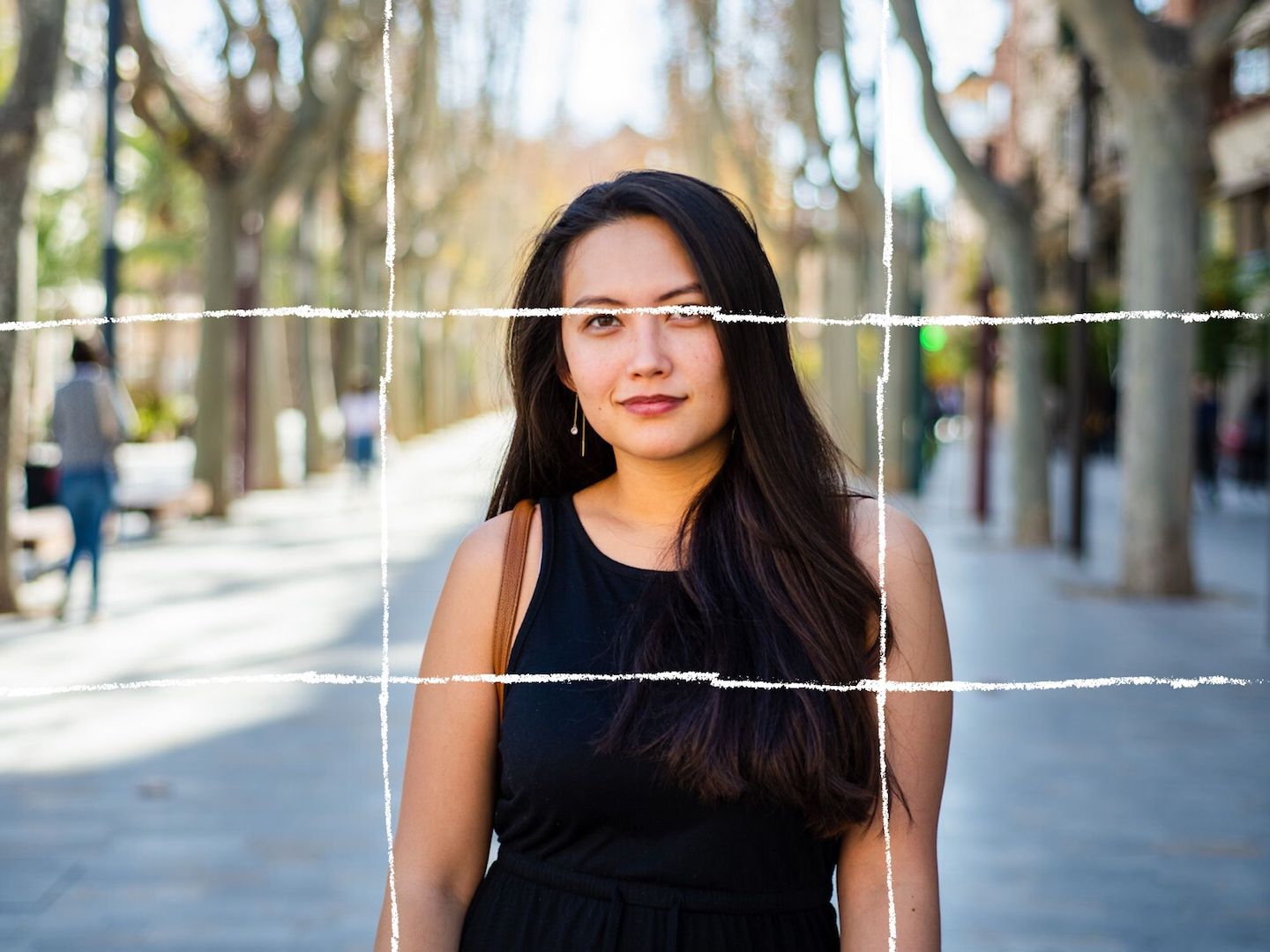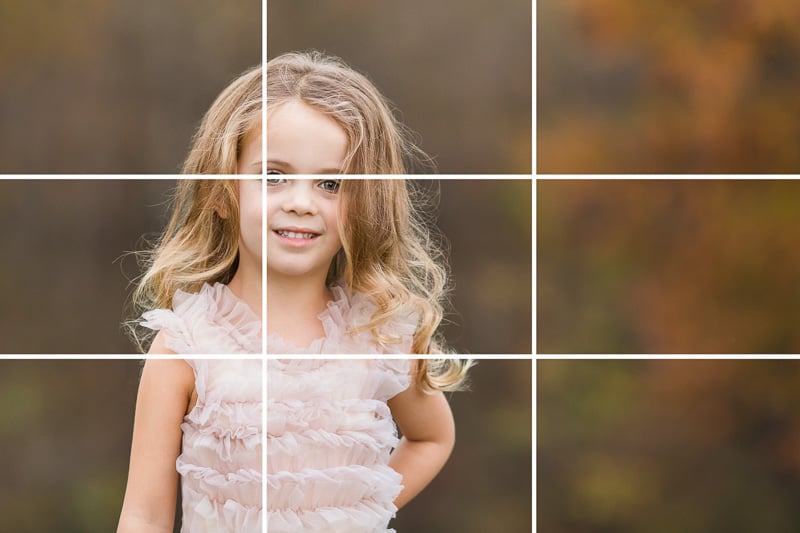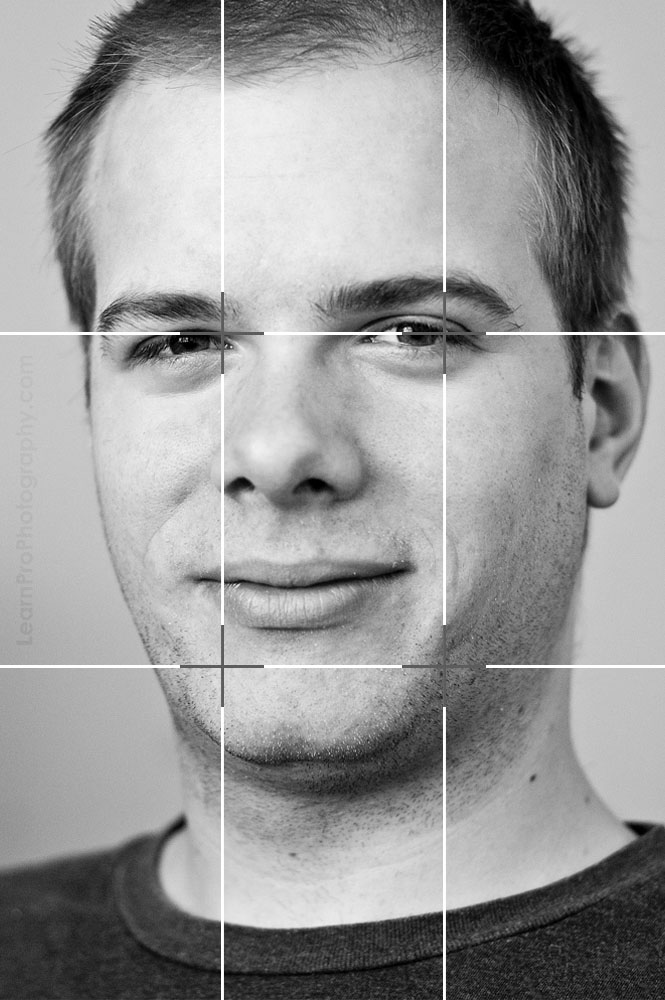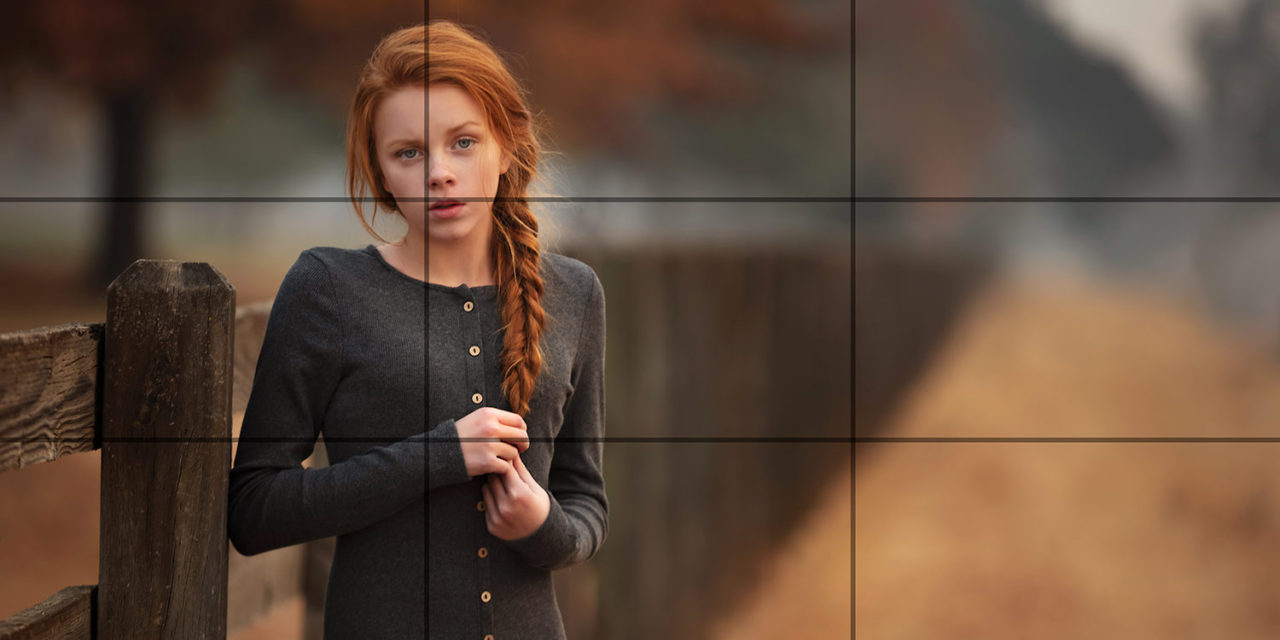When using the rule of thirds there are four. The rule of thirds grid is made up of two evenly placed horizontal lines and.

What Is The Photography Rule Of Thirds
Obey the rule of thirds One of the most basic rules of any art medium whether it be photography motion pictures or traditional paintings is the rule of thirds.

. The rule of thirds is applied to portrait photography in its position of the eyeline. These lines intersect four times and along these points are where your subjects should be placed. This rule recommends dividing the image into thirds and placing your subject into one of those sides instead of in the.
This rule breaks down a photo into a grid with nine equal parts separated by two horizontal and vertical lines. By doing so you draw your viewers eyes to one of the intersections in the most natural way. The rule of thirds is one of the compositional rulesguidelines that applies to landscape street photography pet photography and portrait photography.
Now that you know how to follow the rule of thirds its important to understand why it matters and what exactly it can do for your photos. Putting the horizon line in the center of the image tends to effectively cut the picture in half which can stop the eye from moving naturally around the entire image. The Rule of Thirds can clarify the key element in a landscape photo by guiding the viewers eye and eliminating visual confusion.
The Rule of Thirds in Photography will help you learn how to layout the elements in your photo to best effect. One of the main reasons for observing the rule of thirds is to discourage photographers from placing a subject at the center of a photograph. Rather than having the face in the centre or filling the frame professional portrait photographers normally place the eyeline along the top vertical line in a rule of thirds grid.
One of the basic rules of composition is the rule of thirds Using this principle you simply imagine two horizontal and two vertical lines dividing your frame equally. Rule of thirds in Portrait shoots. Most would agree that the Rule of Thirds is fine and will often help you get a well-balanced composition.
The Rule of Thirds. In portrait photography the rule of thirds is used to achieve perfect composition by aligning people or their faces with the grid lines. At its most basic the rule of thirds states that placing the key elements on the thirds of a picture is more pleasing to the eye than centering the subject or creating symmetry.
Place your subject to the side of the frame Figure 613it just looks more interesting than plunking them smack dab in the middle. Its used in landscape city and also very common in portrait composition. As I mentioned already the Rule Of Thirds can be used not only for a portrait shot but also in landscape photography.
By placing the subject where the lines intersect you will achieve a more balanced and. In portrait photography the rule of thirds is most often applied to the positioning of the eye line because the eyes are typically the intended focal point of the frame. Doing this will make your photo eye-pleasing.
Ricards has placed the model on the vertical line and the eyes on the upper line. The rule of 3rds applies to both horizontal vertical frames. The rule of thirds can be applied to virtually any type of photo from a portrait to a landscape to a street scene.
The rule of thirds is a helpful guideline to photographers on the best way to frame a photo. EOS M5 EF-M55-200mm f45-63 IS. Rule of thirds in portraits.
The rule of thirds the most ubiquitous rule in all of photography. At times though the rule of thirds may not be the best way to compose a given scene. The rule of thirds is a rule in photography that means dividing your photo into three equal lines horizontally and vertically.
The thirds of an image can be found by dividing an image into nine equal parts with two equally spaced vertical lines and two equally spaced horizontal lines. The image below is a prime example of a precisely used rule of thirds in portrait photography. The corners of your central square will be the intersections.
Dynamism movement First by positioning key elements at rule of thirds intersections or gridlines your photo becomes more balanced. Its one of the most fundamental rules in any photography composition technique. One of the first rules of composition most photographers learn is the Rule of Thirds.
Rule of Thirds. The rule of thirds is a composition concept where we split out our image into nine equal squares. Your key elements create visual interest in a.
The basic rule is that the main subjects that catch an eye are on the vertical grid lines or at the intersection points of vertical and horizontal lines. Professional portrait photographers often position the subjects face within the left or right two-thirds of the viewfinder with the subjects eyes along the top horizontal line. With the help of the rule of thirds you can create more engaging interactions between the image and.
Portrait photographers usually position the subjects face to align the top horizontal line with their eyes. Composition is critical in photography relatively simple and often overlooked. Whats more the rule is more easily applied today than ever before - most cameras have a rule of thirds grid that can be engaged such that you can quickly and easily compose a.
You can add these guidelines on most camera displays and we suggest turning them on if your camera allows it. You can place the model in the vertical line. And make the eyes the point of interest putting in on the intersection point.
What is the Rule of Thirds in Photography. Using the rule of thirds grid also helps with keeping those. Then with the imaginary 33 grid of 9 segments formed by two horizontal and vertical lines each the images subject is positioned at the intersection of those dividing lines or along with one of the lines itself.
Great Tips For Symmetry in Photography. The premise is that the two-dimensional canvas is split into thirds forming 9. If you follow the rule your photo will have four intersection points where you can position the subjects face a sunset silhouette or a feature such as the horizon or the sea.
In photography the rule of thirds is a composition type in which a photo is divided evenly into thirds horizontally and vertically. So you can apply it to images in landscape and portrait orientation also. In portrait photography the main focus is usually on the subjects face.
It is also known by other names like the two-thirds rule one-third rule rule of three photography thirds rule etc. Used well the Rule of Thirds can transform your photography regardless of the camera you own. This photography rule is all about placing your objects at the point of interest.
Rule of thirds implies putting the subject or point of interest into a specific location in the frame. We use these segments and the lines they create to help us compose our images better. Really the rule of thirds is about two things.

The Complete Guide To The Rule Of Thirds In Photography

Understanding The Rule Of Thirds

The Rule Of Thirds A Simple Way To Improve Your Images Digital Photography Review

How To Use The Rule Of Thirds In Photography

Rule Of Thirds Definition Examples Learn Pro Photography

Rule Of Thirds In Portrait Photography Composition Guide Bidun Art


0 comments
Post a Comment